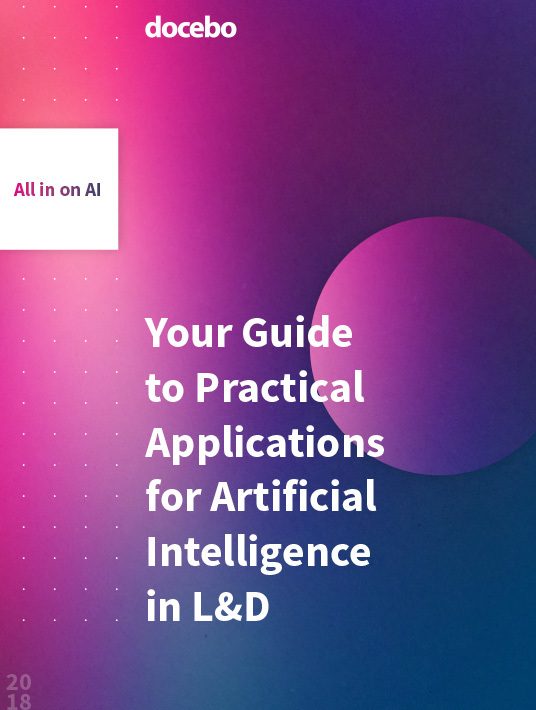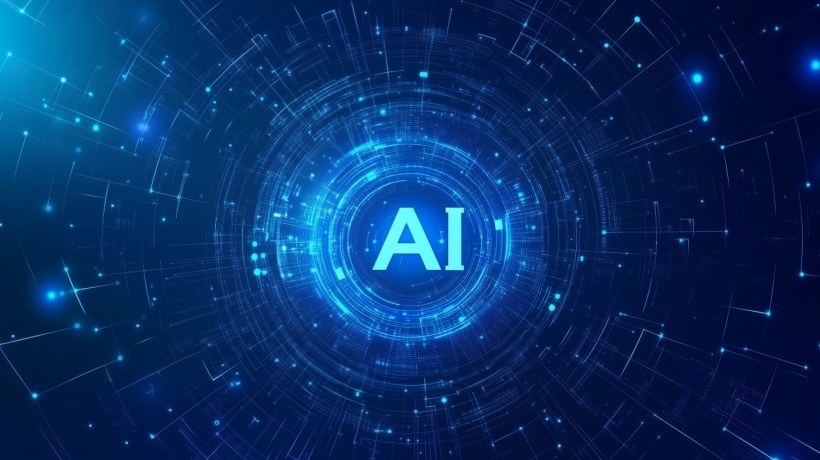Personalized Learning Through AI
While it might be easy to look at AI and consider it as simply another feature of learning technology designed to make it easier or cheaper, seeing AI for its true potential requires looking at personalized training through a completely different lens.
That means understanding that each user is different. Personalized content and its presentation and accommodating personal preferences and learning styles for each of your learners (personalization “at scale”) are impossible without AI. Personalized learning involves passing some control over to learners, giving them some input into how they progress through their learning activities.

These functionalities will take personalization to a whole new level because the system essentially takes the wheel to drive the overall effectiveness of an individual learner journey. Machine learning algorithms predict outcomes, allowing you to provide specific content based on a learner’s past performance and individual goals.
For example, online learners that express a particular skill gap receive targeted recommendations that build knowledge related to their skill gap in a more personalized format. This could include situations where the system would recognize that a learner might be able to actually skip a few modules to take a more comprehensive and less linear learning journey than someone who might lack the basic skills related to that particular topic.
A Few Benefits Of Truly Automated Learning—Powered By AI
Taking learning experiences further with AI means expanding the scope of the availability and effectiveness of your learning content, especially as it relates to the availability of flexible learning opportunities via smartphones and tablets and the development of personalized content that reflects individual learner needs.
1. Boost Engagement And Results
Machine learning algorithms predict outcomes, allowing you to provide specific content based on a learner’s past performance and individual goals. For example, online learners that express a particular skill gap receive targeted recommendations that build knowledge related to their skill gap in a more personalized format. This could include scenarios where the system would recognize that a learner might be able to actually skip a few modules to take a more comprehensive and less linear learning journey than someone who might lack the basic skills related to that particular topic.
2. Allocate Resources To Tasks Of Value
Learners receive the exact online resources they require to fill gaps and achieve learning goals, which equates to less seat time and training payroll hours. Instead, employees get the information they need quickly, as online training resources are tailor-made to their personal and professional objectives. Additionally, L&D admins and support staff spend less time analyzing metrics and reports to instead focus on producing topnotch learning content. With AI, the system takes care of Big Data so the L&D team can spend more time and energy on more valuable tasks.
3. Automate Content Scheduling And Delivery
For such a game-changing technology, it’s ironic that AI and machine learning are, in fact, designed to handle fairly menial, yet crucial tasks in the name of saving humans time to focus on bigger-picture activities. With AI, your learning platform could schedule coursework or deliver resources based on individual learner assessment results or simulations. This would create an environment in which it would be possible to automatically predict course maps for each of your learners who enroll in any of your organization’s courses, and then readjust whenever the need arises.
4. Boost ROI
Consider this simple formula: less training time + greater personalization = better learning outcomes
You would spend less on online training without sacrificing desired outcomes as predictive analytics and your AI-equipped learning platform track and forecast every move each of your learners makes. This also gives you the power to launch online learning resources wherever and whenever they’re required.
AI Without Data Is Like A Car On Empty
AI requires regular data injections to be the most effective. Think of AI as a learner itself: the more data it consumes, the more intelligent it becomes, making tasks such as complete learning personalization and the automation of administrative tasks more effective the longer they have to steep in the depths of your learning platform.
To prepare an AI to aid in personalized learning, it needs to be exposed to as many variables to completing a task as possible, using different types of input data. Some AI systems create their own tasks after they’ve identified the goals for the data they’ve been fed.
As an example, and in the context of learning, the effectiveness of an auto-tagging functionality depends on a consistent stream of data to become more useful (and more valuable to learners) over time. Auto-tagging “listens” to content assets, understanding various keywords to produce a number of tags that assist with categorization and search, without the need to do so manually, saving the admin and learner time when uploading content. If a particular piece of content is ever updated, the AI continues to crawl that piece of content and update tags if necessary.
This is particularly helpful when it comes to enabling learning in the flow of work, where the learner is seeking out an answer to a specific question, at the point of need. We like to use the example of the traveling salesperson: someone in the car or in the airport, and has an urgent request from a prospect on a technical aspect of your product.
Over time, as the AI is fed more and more tags, which are also editable by humans, the functionality becomes more effective, enabling a continuous improvement cycle within the back-end of your learning platform that requires absolutely zero human intervention.
Make Truly Personalized Learning A Reality
Personalized learning involves passing some control to learners, giving them a way to manage how they progress through their L&D activities.
- With AI instead of pre-determined pathways, the learner takes more control over the direction of their learning.
- AI gathers data to determine a learner's knowledge of specific skills, then creates a constantly evolving learning pathway for him/her to take.
- AI doesn't just enhance the learning platform but makes it responsive to learner needs by adapting intelligently to their request.
Artificial Intelligence is a potent tool that holds value for EdTech specialists everywhere. If you would like to know more about it, download the eBook All In On AI: Your Guide to Artificial Intelligence in L&D and learn how AI will revolutionize personalized learning.









